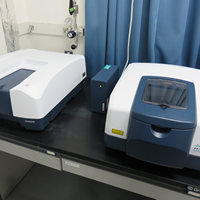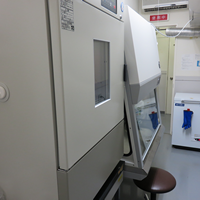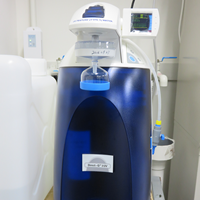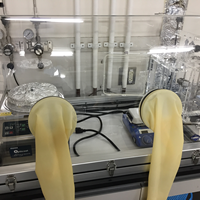 | FTIR Spectrometer (right), UV/VIS Spectrometer (left)
These are routinely used for steady-state measurements. An option of attenuated total reflection (ATR) with a ZnSe prism is available for the FTIR spectrometer. |
 | Cell Culture Facilities
Our laboratory has an incubator, a laminar flow cabinet, an autoclave, a deep freezer (-80 °C), and other equipment to culture cells by ourselves (Schizosaccharomyces pombe provided by Prof. Kawamukai of Shimane University; Lactobacillus plantarum, Paracoccus denitrificans, Escherichia coli, etc. provided by Prof. Nomura of University of Tsukuba). |
 | Ultrapure Water System
This apparatus (Merck Millipore Direct-Q UV3) produces ultrapure water from tap water. |
 | Glove Box, Spin Coater
A nitrogen-filled glove box and a spin coater are used to fabricate organolead halide perovskite thin films. |